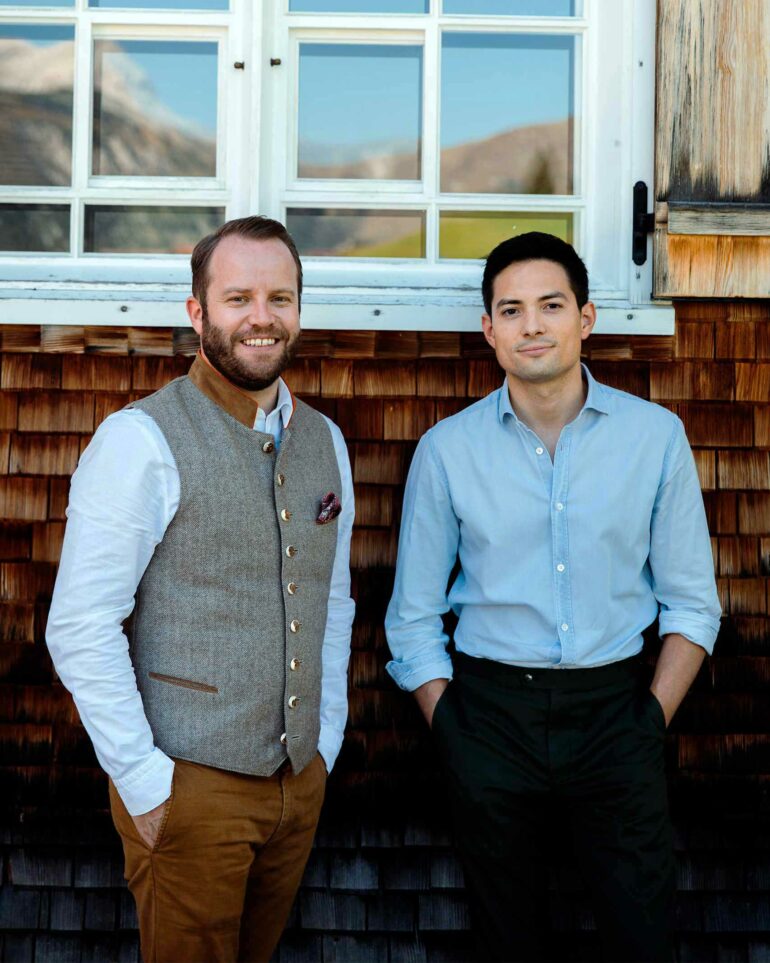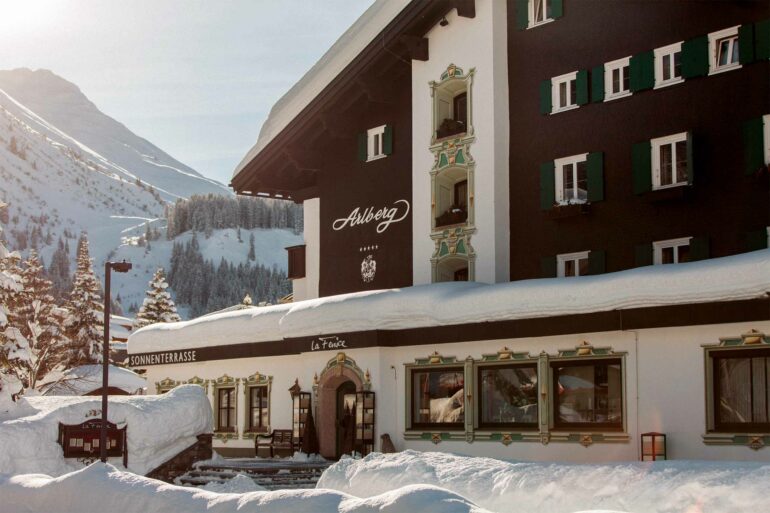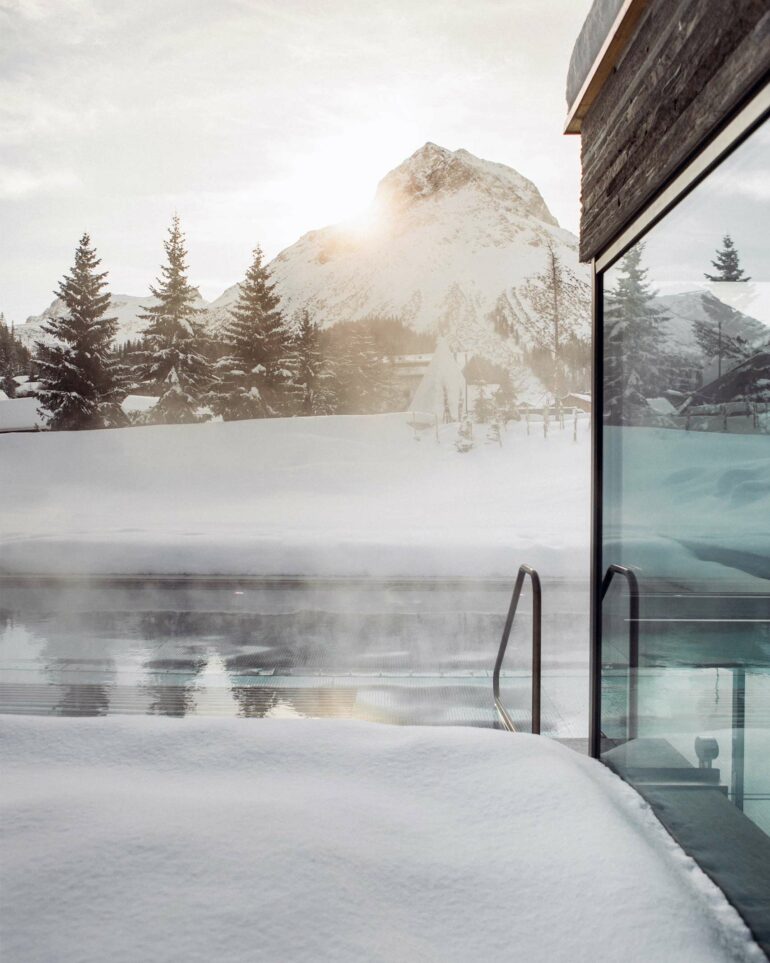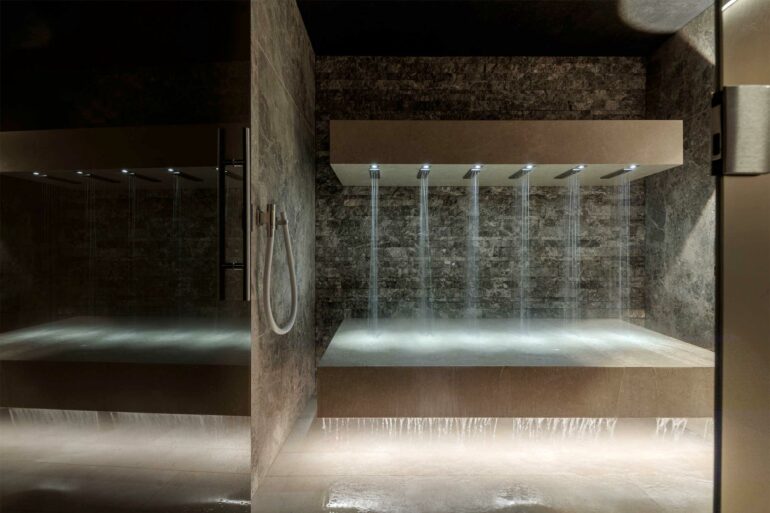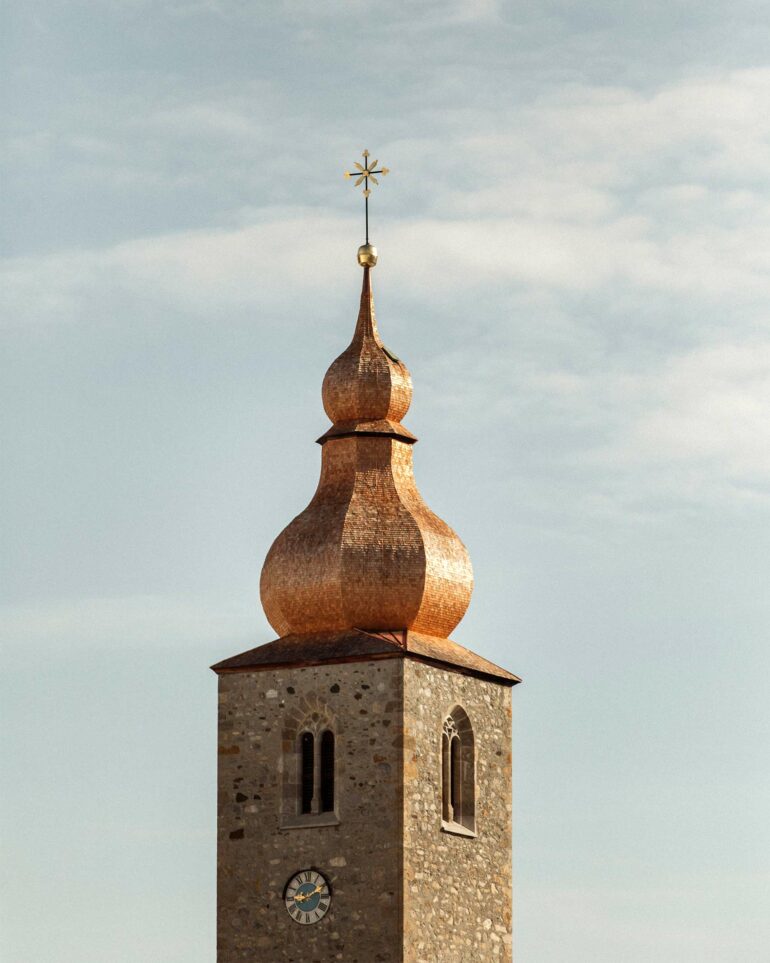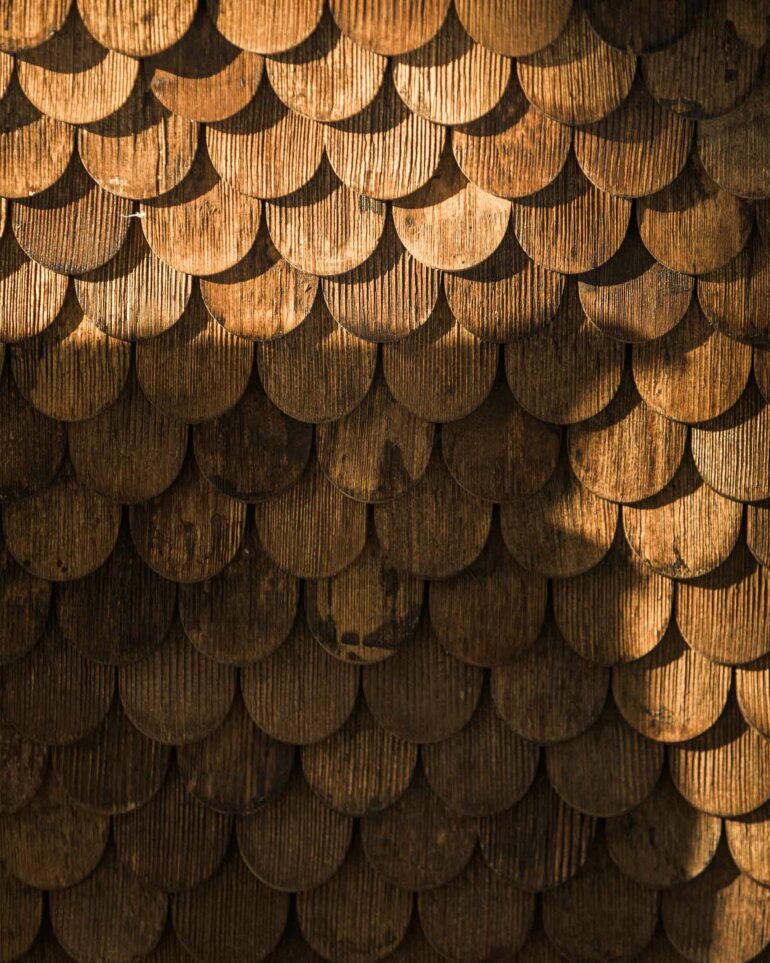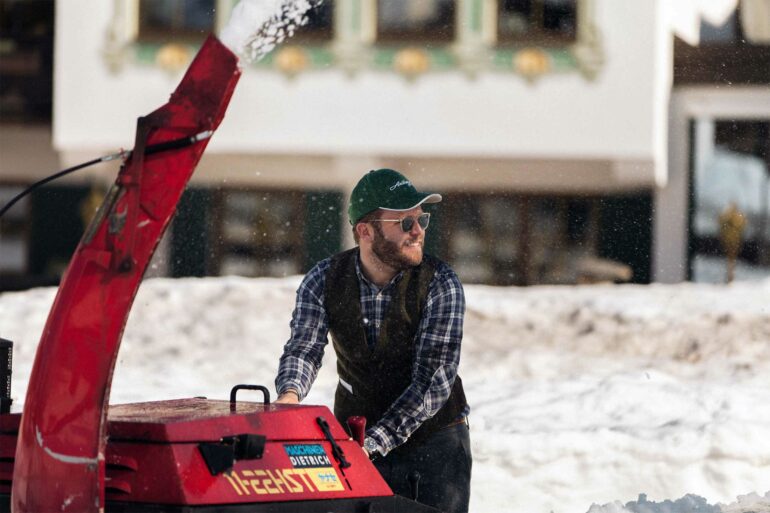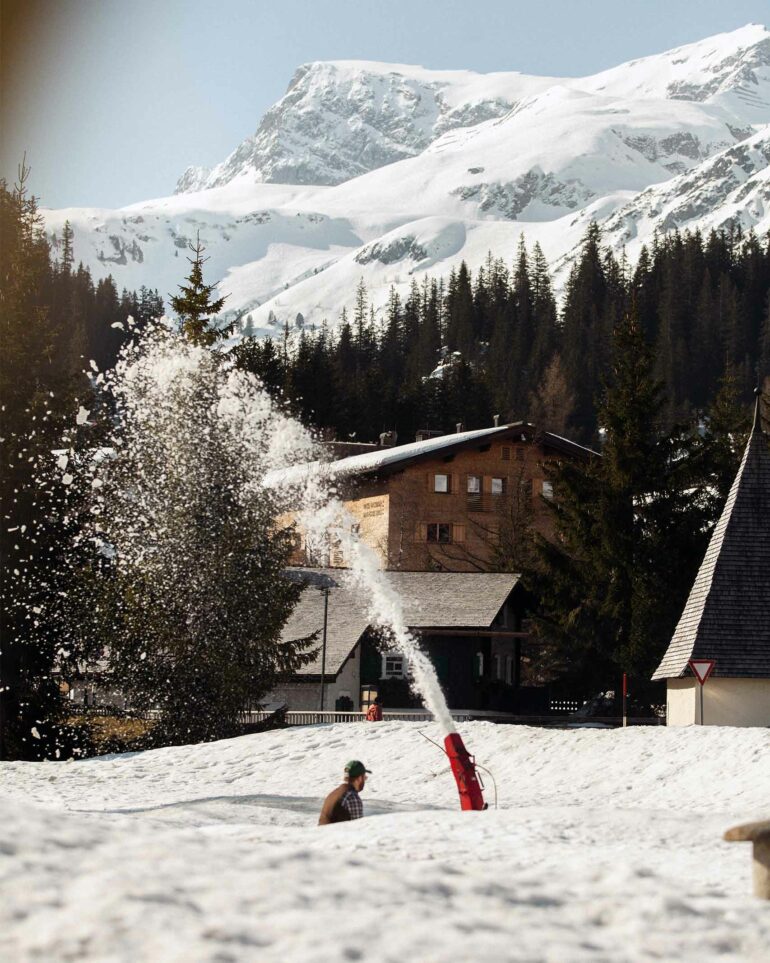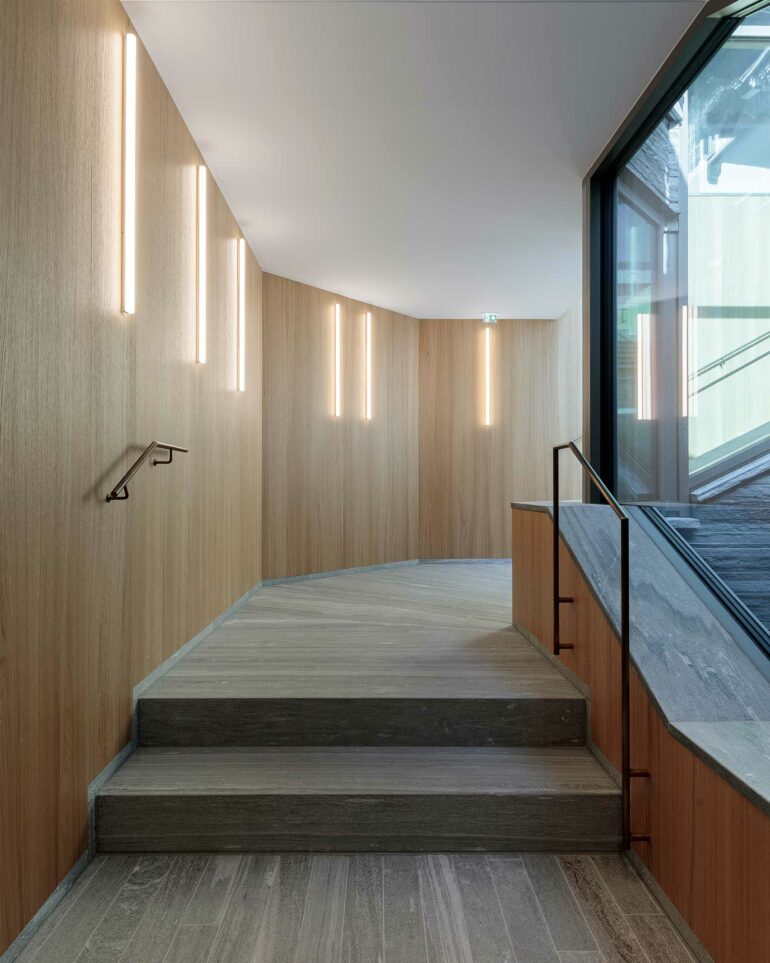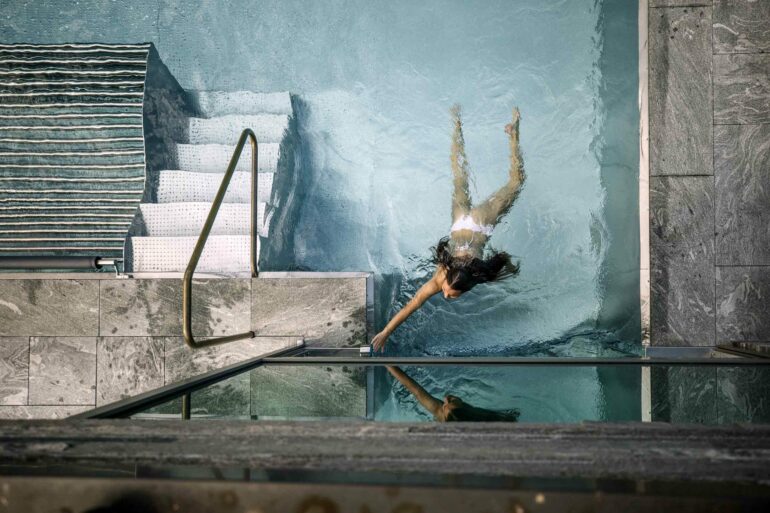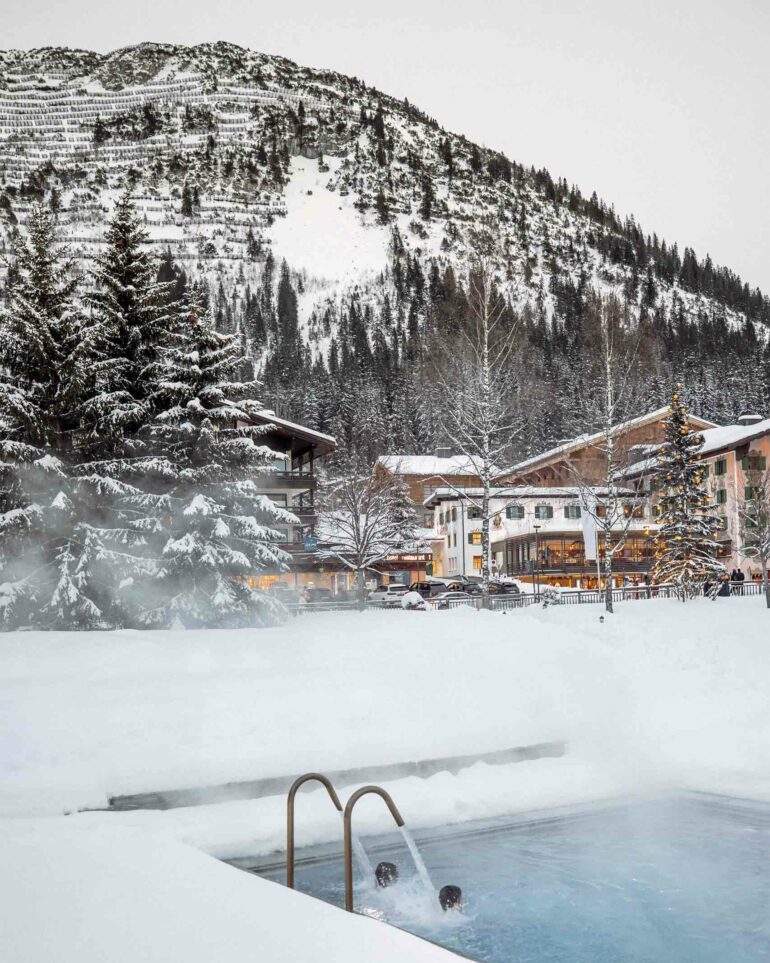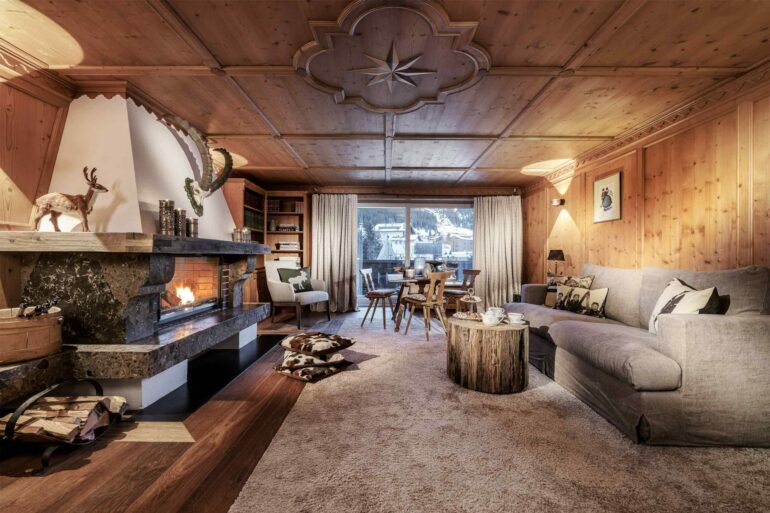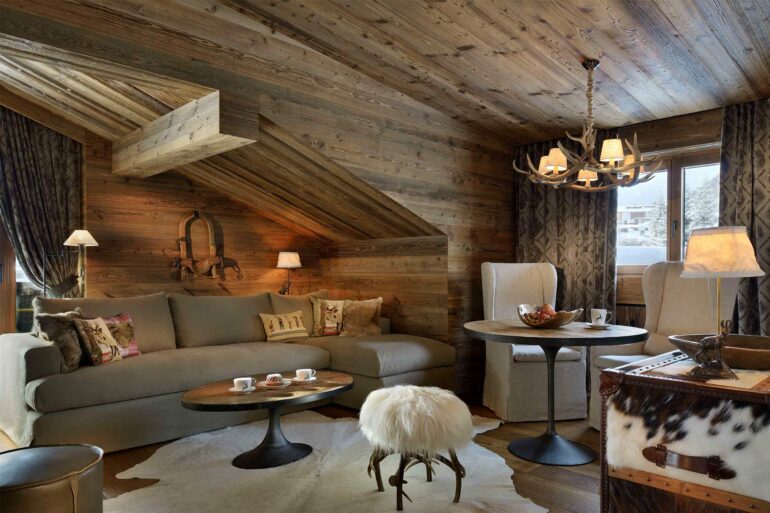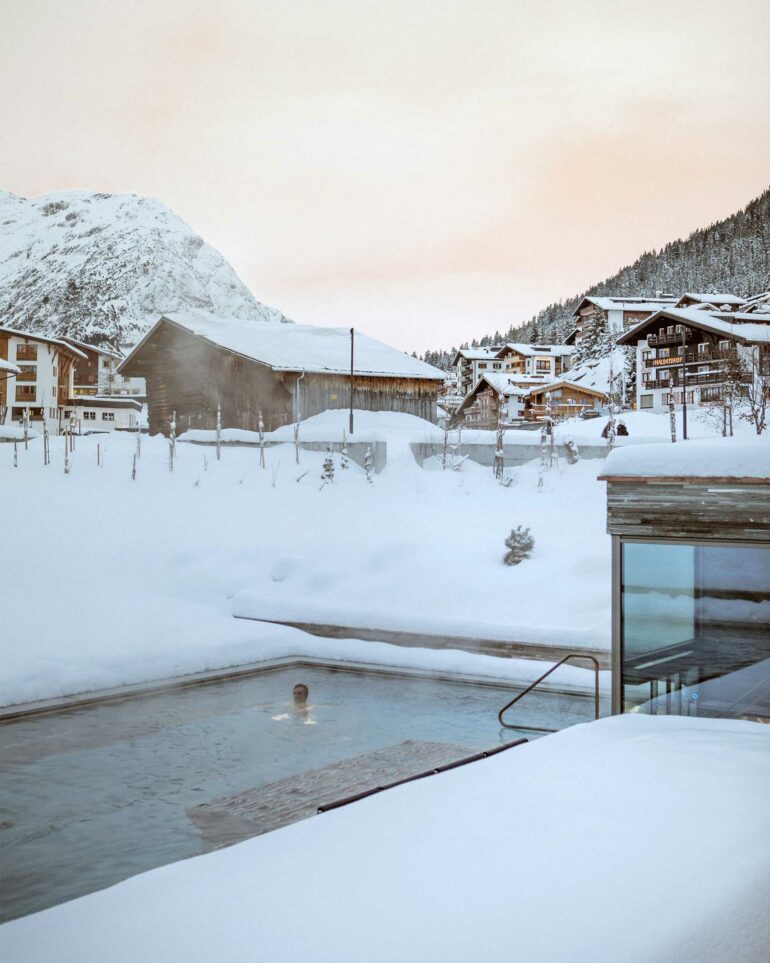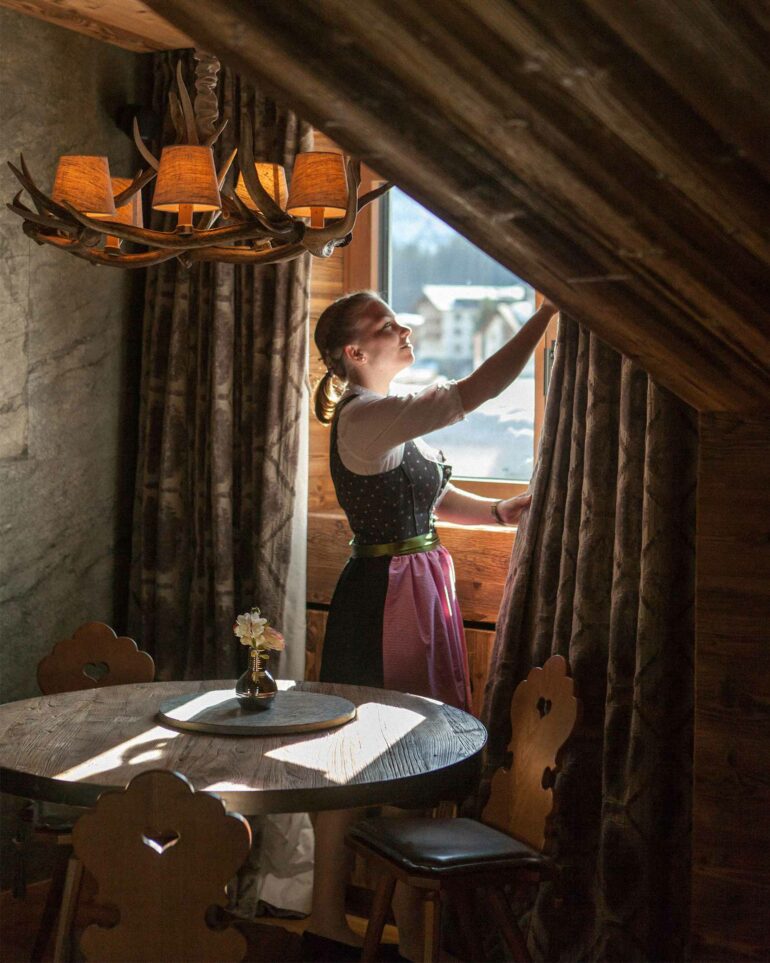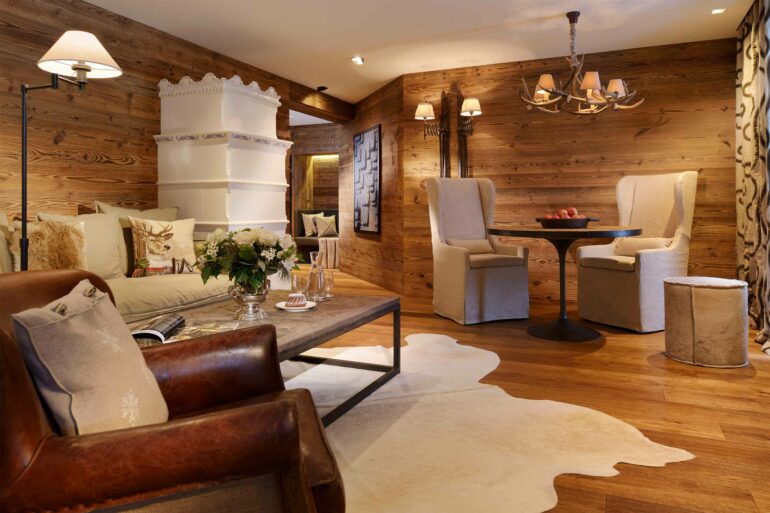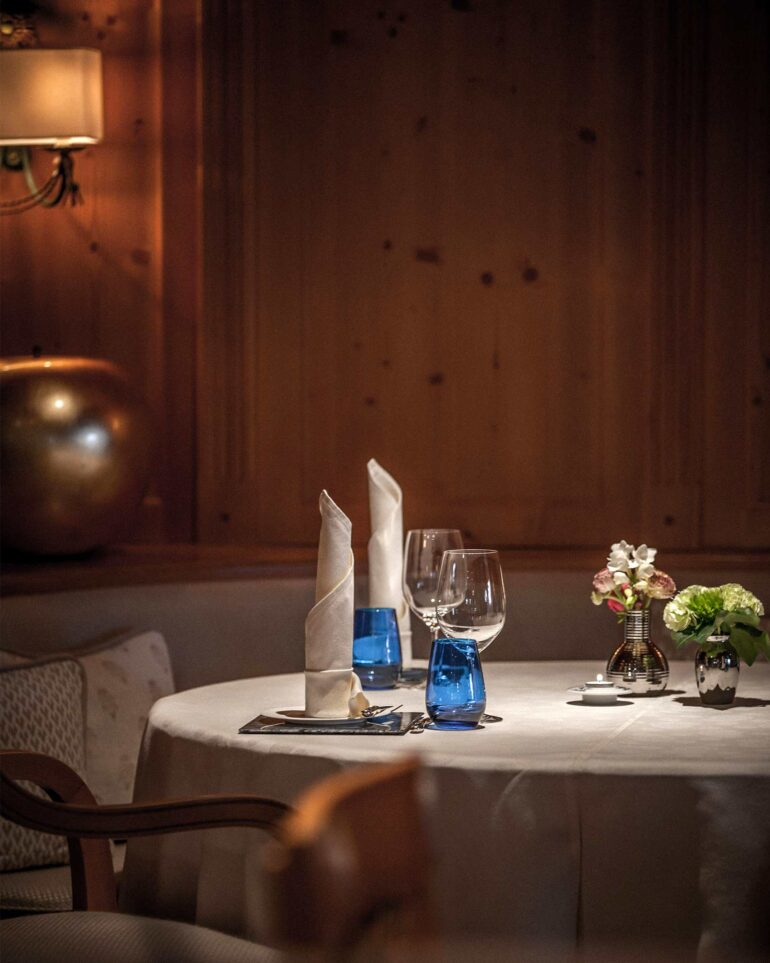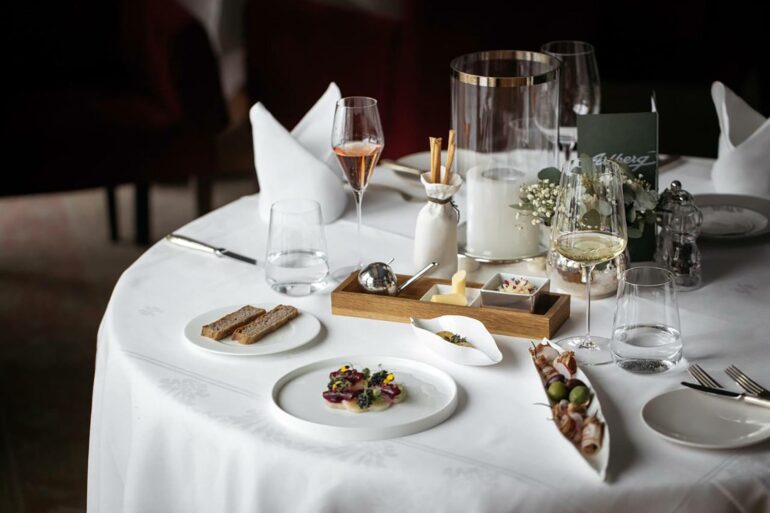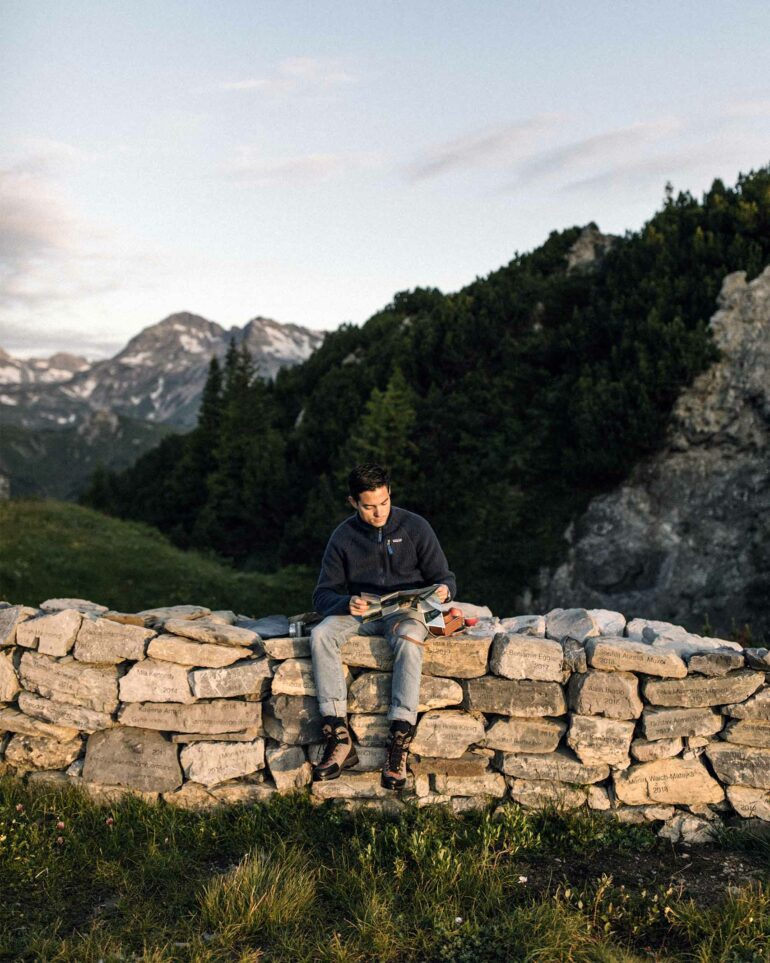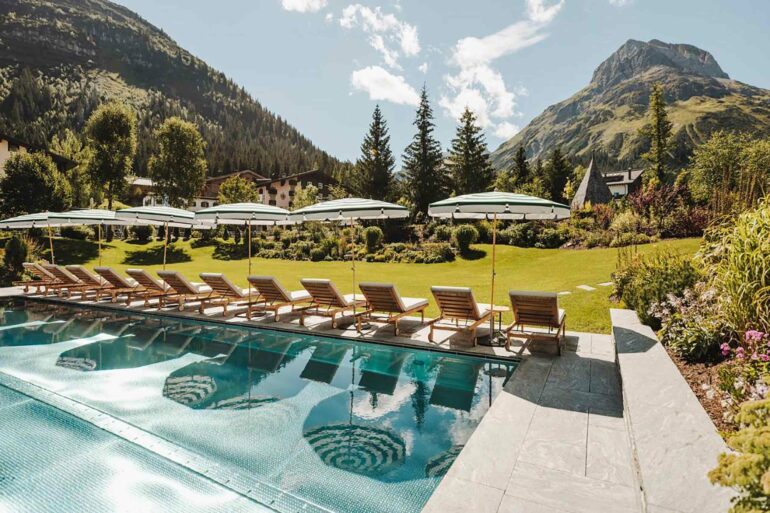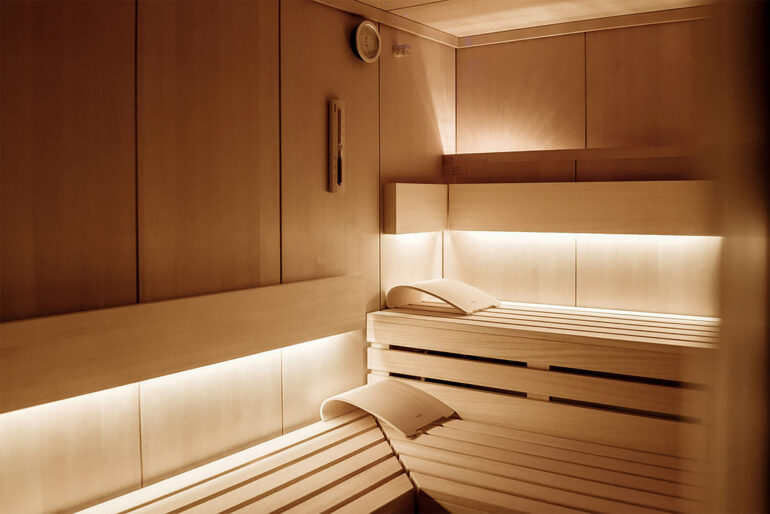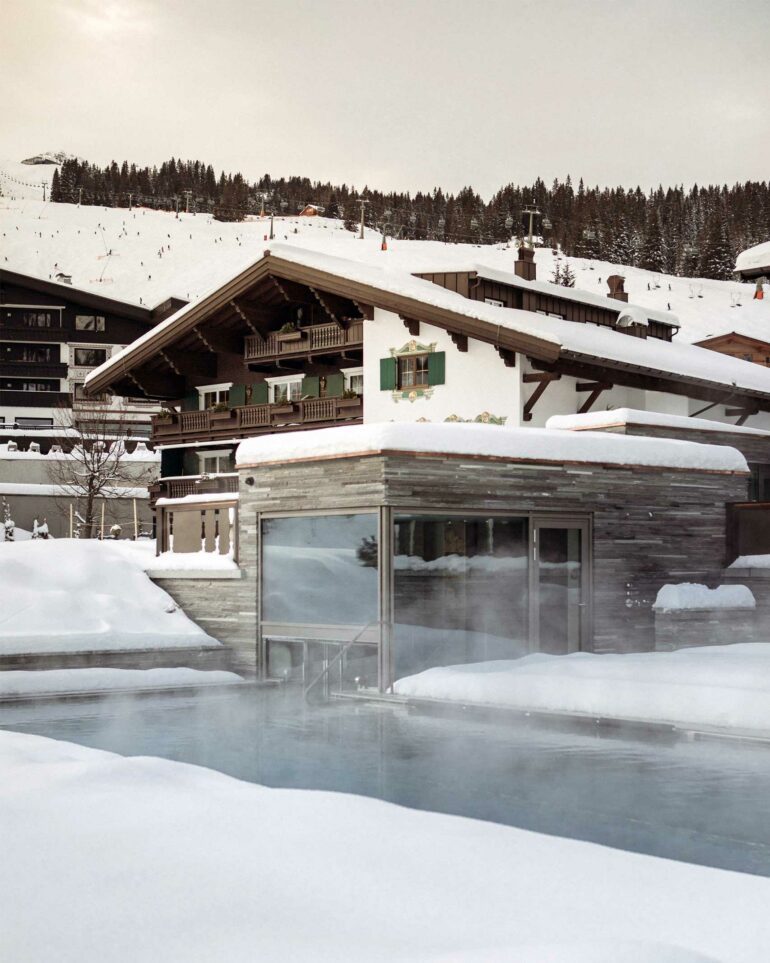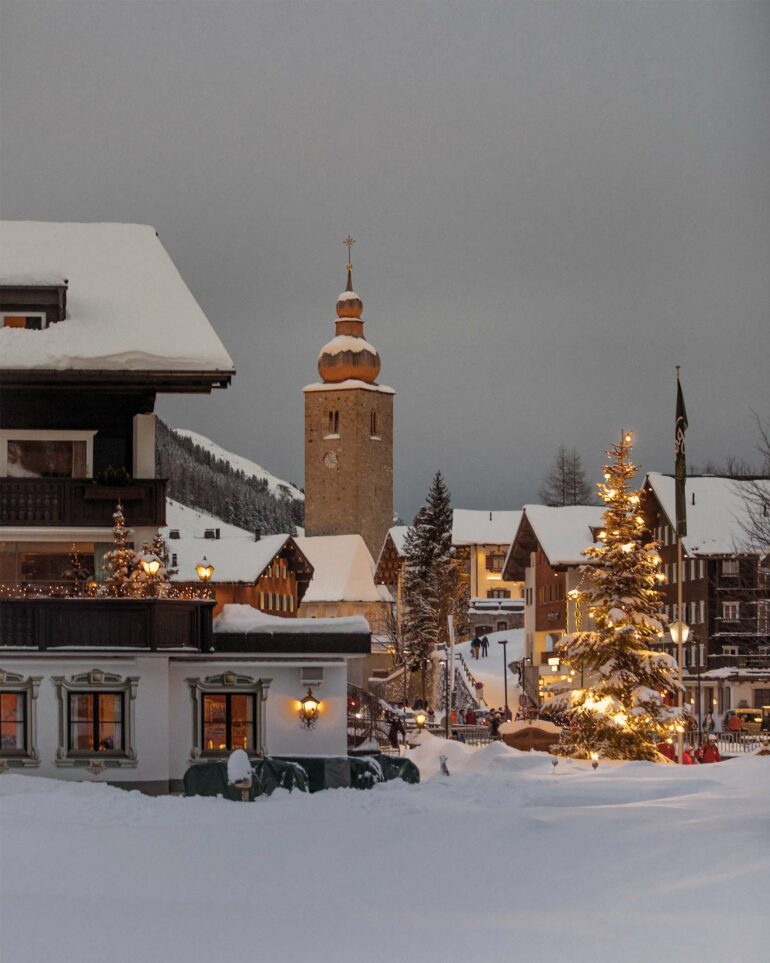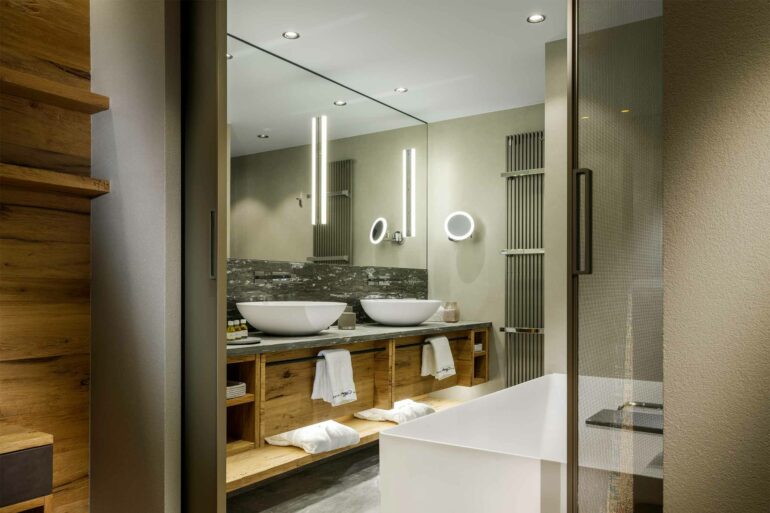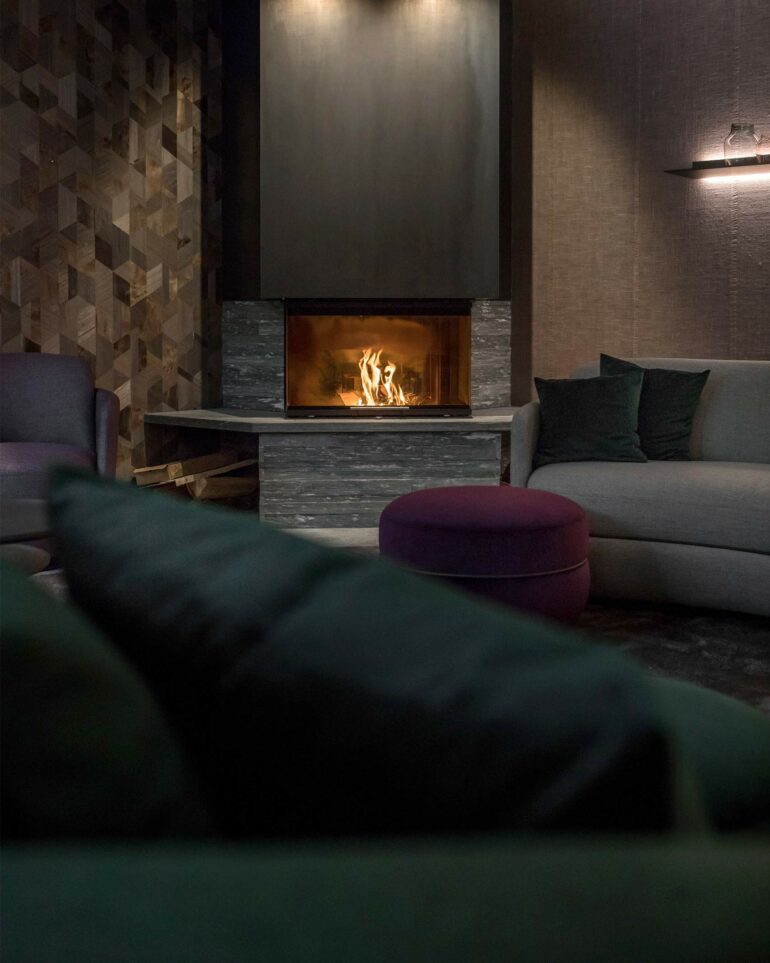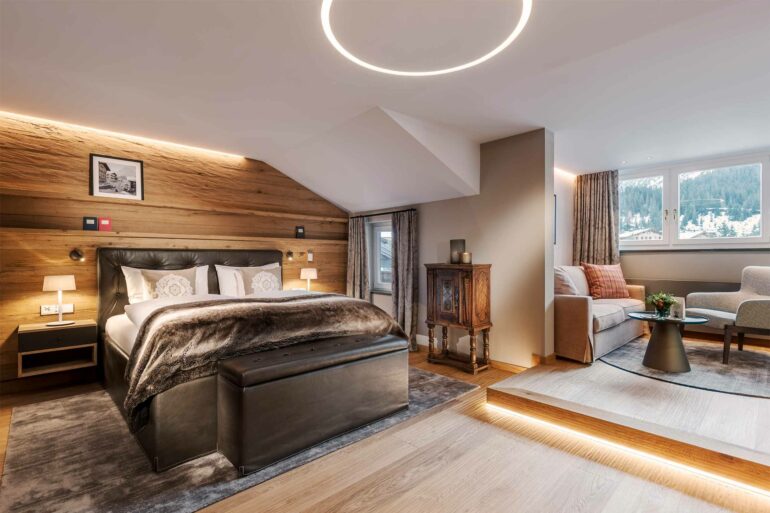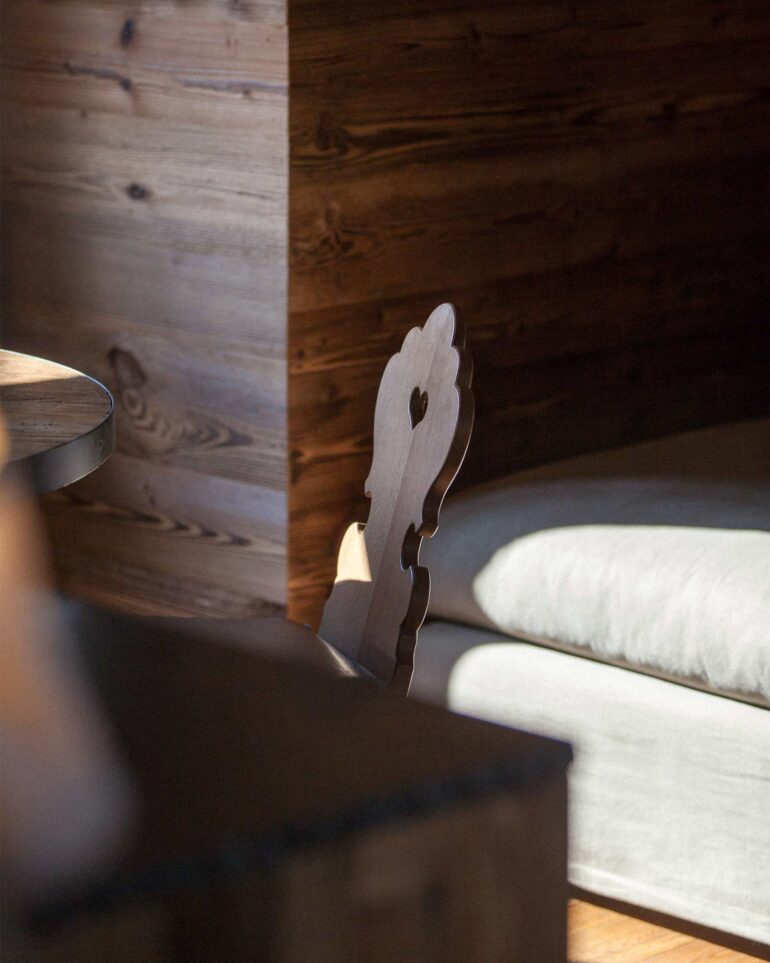When Benjamin Schneider and his husband Patrick Krummenacher took the helm at Hotel Arlberg, the family hotel, their opposite personalities combined to produce harmonious results where sustainability and wow factor go hand in hand, as Uwern Jong reports.
I got to know Patrick Krummenacher over dinner many years back at an opulent mountain resort property in Gstaad, Switzerland. I was living the good life, in one of the world’s most gorgeous hotels, and he was the property’s handsome communications director plying me with endless flutes of Louis Roederer et Philippe Starck Brut Nature champagne (it’s ‘sugar free’, so why not?). As the bubbles flowed, the conversation quickly moved off the obligatory hotel yada-yada into life and love. And that’s when the sparkle of a wallet-depleting diamond, set in an elegant platinum engagement ring, caught my eye. Which is how I came to learn all about Benjamin.
Like something right out of a Netflix foreign-language young-adult series, Benjamin and Patrick first locked eyes in the hallowed hallway of the École hôtelière de Lausanne, the oldest and most renowned hotel school in the world. Patrick explains that it was love at first sight. Benjamin stood out from the crowd, sporting his Austrian loden jacket with horn buttons when everyone else was in a black or navy suit. Knowing that their climb up the hospitality ladder would eventually require a long-distance relationship, they each headed off on their various adventures around the world for six years – Patrick to Switzerland’s most-lauded luxury hotels and Benjamin to North America’s. Just before any chance of a seven-year itch kicked in, they tied the knot and made a life- and career-defining move to the tiny Austrian mountain village of Lech to run the Hotel Arlberg together. It was somewhat of a change for the hotel’s long-standing history – as well as for Austrian family-run Alpine hospitality in general – to be led by two men.
“We often get asked where our wives are and most people don’t expect our unabashed answer,” muses Patrick, “but after the penny drops, no one gives it another thought.”
I guess if they did, they’d be out in the cold. Literally. Chance has it that Benjamin’s family owns the renowned hotel, so they are both, unequivocally, the masters of the house. Benjamin grew up in the hotel business, spending most of his childhood around the reception and bar or behind his mother’s counter at her jewellery store (which explains the immaculate taste in engagement ring). Patrick’s family, on the other hand, never had anything to do with innkeeping, but he had always loved hotels.
Entering and transitioning into a family-run establishment came very naturally to the couple. After working 13-hour-plus days for large hospitality corporations, never getting to meet the hotel’s owners, it was a rewarding change to dedicate their time and efforts to their own vision.
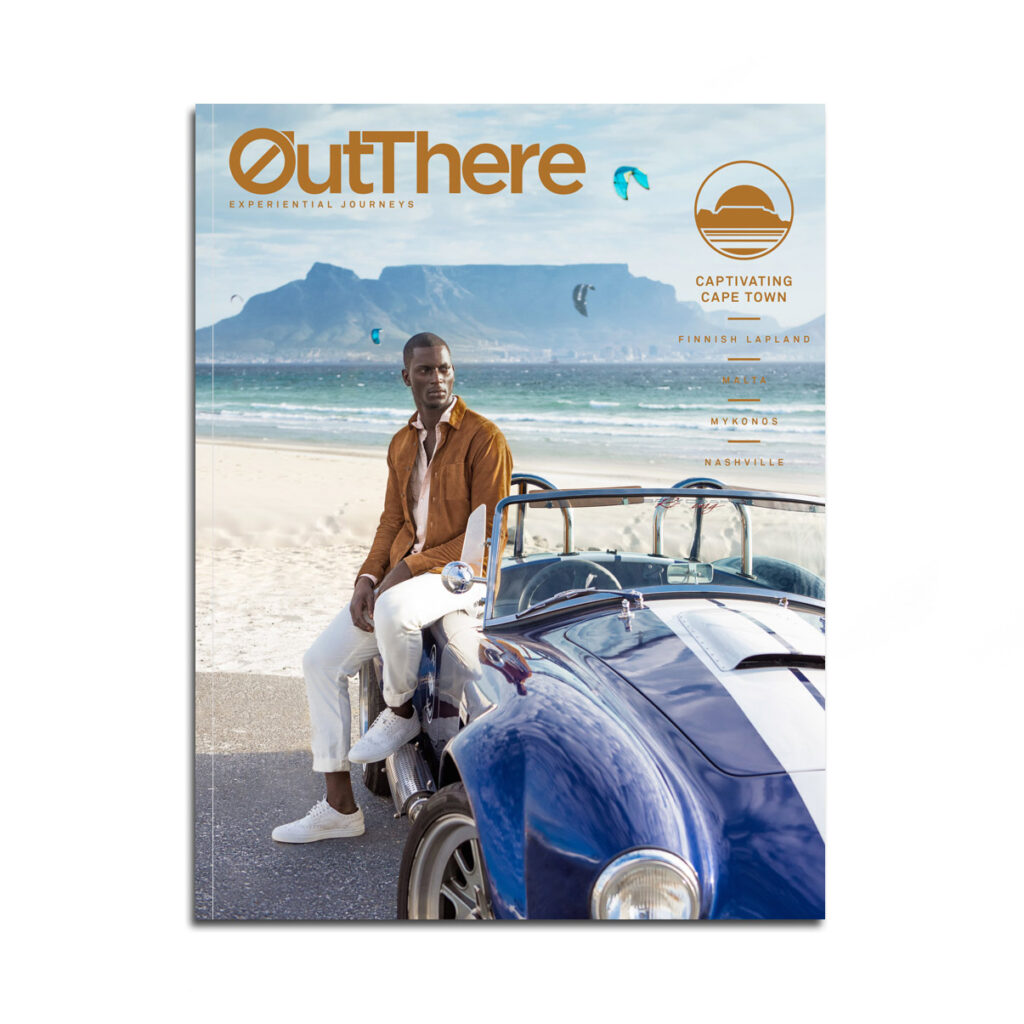
This story first appeared in The Captivating Cape Town Issue, available in print and digital.
Subscribe today or purchase a back copy via our online shop.
“Benjamin’s parents give us enough creative and strategic room to make our own decisions,” says Patrick. “From the freedom to replace the tableware, to planning the renovation of a suite.”
Since taking the reins, the couple has created and refurbished 24 rooms and suites in the house, not to mention two entirely new spa areas with treatment rooms, a heated outdoor pool, a new ski and boot room and a reimagining of the hotel’s terrace and gardens. That’s surely got to be a lot of design disagreements.
“From a style perspective, we both look for classical elegance with an open mind for modern aesthetics and colour,” explains Patrick. “Not only in the way we dress, but also the way we design our home and our input for the future of the hotel. Benjamin follows his instinct more than he follows any kind of style movement. It’s how he picks his clothes in the morning. He doesn’t seem to give it a lot of thought, but always looks very well put together. He’s a natural. I follow all kinds of styles, from 1930s Italian, to a building designed by Japanese architect Kengo Kuma, to a light installation by Icelandic-Danish artist Olafur Eliasson. For us both, great style lies in being unafraid to show off a person or place’s personality.”
Benjamin and Patrick are both drawn to cinematography and scenography. An opera or a play, a new art installation, or a beautifully shot movie are all sources of inspiration for the couple. And, of course, there’s travel. When they get the chance to holiday, they try to check off as much as possible from a long bucket list of properties. They had recently been to a 16th-century palazzo on Puglia’s southern tip, a masterclass of old meets new. They also adored a vineyard hotel just outside Aix-en-Provence, where French terrazzo floors, Carrara-marble bathtubs and Danish furniture from the 1970s fused beautifully.
“But just like every couple, we do have our own versions of the truth,” laughs Benjamin, “and being in both a private and entrepreneurial relationship, it’s easy to take business decisions to a personal level. However, we manage to leave our emotions out when it comes to important decisions. We do argue sometimes over the right wall colour. Imagine when you have to do that over 51 rooms… Luckily, we tend to see eye to eye mostly.”
“Sharing in the vision of the Hotel Arlberg is the best thing that could have happened to us,” interjects Patrick. “We complement each other well. Benjamin is more analytical. He is the best when it comes to solving problems, which comes in handy when you front a hotel. I am more the creative type.
“We often refer to ourselves as firefighters or diplomats,” he jokes, “doing everything from fixing a heater to media interviews. Our similarities are perhaps the greater challenge. We can both be stubborn and impatient, but we have our family members to balance us out. Benjamin’s parents have been wonderful all the way. My mother-in-law often says that she’d rather have a son-in-law to take things over than have to deal with a sassy new daughter-in-law in the hotel.”
“There’s also a fascinating chemistry when you combine two opposite natures, and I don’t think it can be copied. So many hotels in Austria or the Alpine area repeat the old chalet aesthetic. It’s just not our approach. Originality is so important to us”
Benjamin and Patrick represent the third generation of Schneiders – now Schneider-Krummenachers – to run the hotel since its inception in 1956. It opened as a classic Alpine chalet Gasthof and, while it has undergone an incredible expansion over time, much respect is paid to its beginnings. It is clear there is an eye to preserve the heritage of the property, from old paintings, photographs and hunting trophies, to its delicate wooden panelling and tiled stoves, and from the polished ornate silver and spotless heavy crystal they use in their restaurant, to the old brass and leather suite keyrings that depict a traditional chamois hunt. And, although the antlered chandeliers hanging from the pine-beamed ceilings, lush fur throws and leather armchairs may nod to the old, the look was put together by an expert designer, who delivered a contemporary overall aesthetic throughout. Even the hotel’s branding and identity have recently been given a stylish update by Innsbruck-based graphic design house Bureau Rabensteiner, but not without a clear Mid-century Modernesque typographical lean and a refreshed logo not too far from that of a vintage Buick Skylark.
Then there are the touches of today: light fixtures by Italian designer Antonio Citterio and handmade furniture by Austrian manufacturer Wittmann and Italian specialists Cattelan Italia, Minotti, Molteni&C, Henge and Rimadesio.
“Perhaps it would have been easier to leave things as they were and lean towards the more classical approach,” says Benjamin. “But we believe that our contemporary eye simply acts as a new layer of comfort and practicality. There’s also a fascinating chemistry when you combine two opposite natures, and I don’t think it can be copied. So many hotels in Austria or the Alpine area repeat the old chalet aesthetic. It’s just not our approach. Originality is so important to us.”
“In terms of soft furnishings, we look first of all for fabrics that stand the test of time,” adds Patrick. “The good thing is that our manufacturers have learnt to adapt their offerings and bring out beautiful textiles that last. We want to reference our Alpine surroundings as much as possible and use a lot of loden wool and broken linens. When it comes to leather upholstery, we look for handmade quality, stitching and embroidery whenever possible. This attention to detail also extends to something that often goes unnoticed – walls. Our surfaces – including the ceilings – have been plastered with high-quality organic materials such as lime, clay and minerals that improve the regulation of air circulation and room temperature. The colour combinations of natural tones with accents in umber, silver and green in the rooms aim to soothe and invigorate at the same time.”
Prudent never to take on huge, financial risks on entire-wing renovations (although their recent spa update is rumoured to have come in at around five million euros), Benjamin and Patrick have focused primarily on evolving the property cleverly and sustainably. Wherever they design new areas, they think of how they want things to work. The hotel is their family home and, before they consider profit gain, they want things to be designed in a way that they would firstly appreciate as guests. They do not set strategic budget goals, nor do they have to present any numbers to investors. As such, the property has been renovated bit by bit, with love, affording some layer-upon-layer eclecticism, visual interest and storytelling.
“Here, it is quintessentially Lech to be part of our local Alpine family and, whereas ours is a bit more unconventional compared with others, we still carry on the family-style legacy”
“We adore history, but we have to ensure that it does not interfere with the comfort expectations of today’s travellers,” says Patrick. “Bathrooms are an example of where we have completely abandoned old structures and focused on entirely new designs. The same goes for our new spa: light moods are set depending on the time of day and we have illuminated wardrobes, heated mirrors, carbon-fibre floor heating, rain showers and freestanding bathtubs. The luxury is in the detail.”
Arlberg’s amazing spa is the first hotel in the world to boast the full array of multi-sensory water experiences from German bath specialists Dornbracht and the area is lined in blue-green Vals quartzite from just around a hundred miles away in the Swiss Alps, providing fascinating pattern and depth with its colour and mica particles. Where paint is used, it is 100 per cent natural, made from pigments derived from volcanic clays, ultramarine ash and semi-precious stone to mimic the hues truly found in nature.
“Quality is a big factor for us when making decisions,” explains Patrick. “We generally tend to use materials that cost more, are sourced locally, but last longer. Wow factor and sustainable design can go hand in hand. But more than just great style, I think our guests today are looking for a sense of belonging, comfort and inspiration through the overall experience that we as hoteliers provide. Belonging is the feeling of being recognised as a guest, but also as human beings with individual needs and desires that are here to be fulfilled. Comfort extends beyond thread counts, but is still all about quality. Our guests are safe in the knowledge that that all is taken care of. And then in terms of inspiration, I think that travellers set out to book trips and hotels to be inspired by the experience, and that can be everything about the destination or a specific aesthetic, meal or wine cellar, a transformative spa area or treatment. If I’m not inspired by a place, I’d rather stay at home.”
“I believe that personalisation and a sense of place are key to the overall experience,” says Benjamin. “Here, it is quintessentially Lech to be part of our local Alpine family and, whereas ours is a bit more unconventional compared with others, we still carry on the family-style legacy. It’s also important to uphold the traditions of our loyal, regular guests. For example, we’ve welcomed the same families for the festive period and also during vacation time in February for years now. We keep their skis in storage until the following year, but also other personal items, such as their own Christmas ornaments or cocktail wear. Up to this day, we still have Lady Di’s skis and boots in storage, as if she were going to check in again one day.”
I ask what the future holds. They tell me that they have enough plans to keep them busy for the next 20 years. But soon they would like to extend their current design approach into the main restaurant and reception area. I’m told that the bar and fine-dining restaurant are features that they also cannot wait to get their hands on. And once they evolve their food and beverage outlets, they feel that they will be able to create some new and exciting hotspots for Lech.
It seems that the future of Hotel Arlberg is a bright and stylish one; and one that is in safe, diamond-ringed hands.
Photography by Mike Rabensteiner and courtesy of Hotel Arlberg


